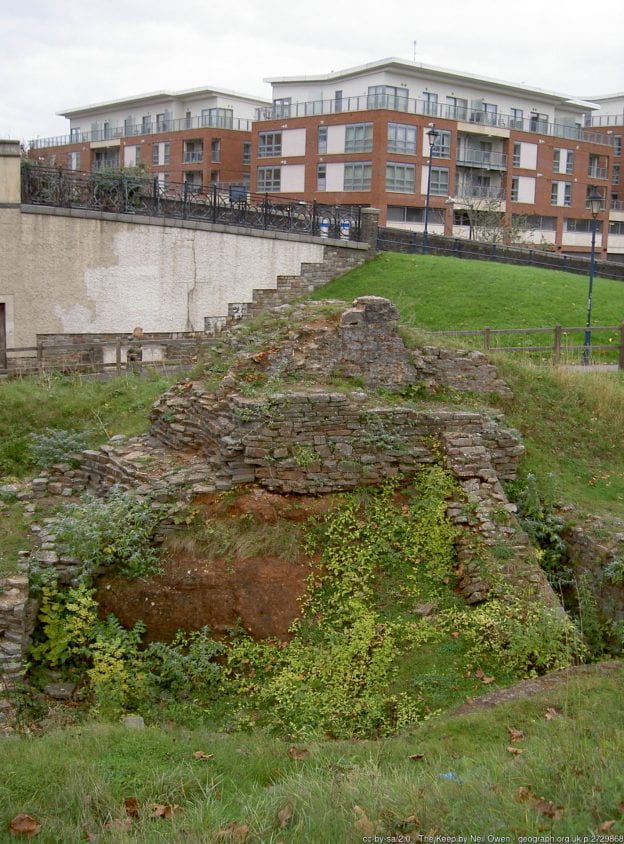Something for International Women’s Day 2024
In 1241, a woman of royal descent died in Bristol castle. She was Eleanor of Brittany, granddaughter of one king of England (Henry II), niece of two more (Richard ‘the Lionheart’ and ‘Bad’ King John), and first cousin of the man on the throne at that point (Henry III), not to mention daughter of a duke and duchess of Brittany. She had spent a lot of her last two decades in Bristol, a city on the rise, with an imposing castle, but Eleanor’s prolonged stay here was very much not her own choice.
She had been born between 1182 and 1184, and, with her pedigree, would have expected a big dynastic marriage, life at one of the great courts of Europe, a position of respect as wife and mother, frequent travel, extensive lands, and a life of some influence. None of this happened: she ended up a prisoner of the kings of England for much of her life, a situation which only ended with her death in captivity in Bristol.
Eleanor had not, as far as we know, committed any offence which might justify this unusual treatment, however: she was confined not for what she had done, but for who she was. After the death of her uncle Richard, it might have been argued that the right to the throne of John, and his line, was weaker than that of the children of his older brother, Eleanor’s dead father, Geoffrey. It was in the interests of John and his son Henry III to keep her unmarried and under control, and that is what they did.
Eleanor’s story may strike us as sad, or cruel. Or we may not be moved by her difficulties and disappointments, when we compare them to the sharper suffering of many of her contemporaries: she did, after all, have food to eat and clothes to wear, the occasional royal gift, and lived out a fairly long life. Whatever may be our emotional response, I think that Eleanor’s treatment tells us some important things about women, law and legal history.
Eleanor’s lifetime was a period often associated with important early steps towards legal guarantees of ‘civil liberties’, with moves in Magna Carta (1215) to set down limits upon royal power to imprison without trial. As its most famous clause states,
There is room for debate as to just who was a ‘free man’, and whether ‘man’ was thought to include ‘woman’, but whatever the technicalities of language and gender, it is very clear that this rule – confirmed by John’s son Henry III – did not help her. We could interpret that as meaning that successive kings overrode the law, but we do not need to: the truth is that ‘the law of the land’ gave male kin wide and vaguely-drawn rights over their female relations, so that they could plausibly portray their custody of Eleanor as legitimate. My point here is not that women had a raw deal in the medieval period (certainly there were rules which put them in an inferior position in many ways, though we might argue about the situation of different disadvantaged groups, and note the fact that Eleanor’s brother, Arthur, ended up dead rather than imprisoned). What I want to stress is that, when we discuss the development of law, we need to be aware that there is not just one story to tell, not just one time-line to set out: the law’s impact on men and women might be very different, even when that is not spelled out. It is extraordinary how often this fact has been ignored.
Legal history, as it developed in the English law school, has been slow to move away from an assumption that the concerns of (free, white) men of the past should shape our study and our time-line of legal development. It is now doing so, and this summer’s British Legal History Conference in Bristol will contribute to the broadening of perspective, with presenters considering our theme, ‘Insiders and Outsiders in the History of Law’, with the ‘outsiders’ including, but by no means limited to, women.
Another trait of ‘classical’, or ‘law school’ legal history has been its sometimes odd, stereotypically masculine, warlike imagery, with accounts of ‘triumphs’ of particular types of legal action (and, in one case, memorably, one sort of legal action ‘storming the great citadel’[i] of another). I can never help being struck by the contrast between this fondness for military metaphor in discussion of legal procedure and the frequent lack of interest in Eleanor of Brittany, confined in her more solid, and emphatically non-stormed, castle.
GS
29/2/2024
This post is based upon work undertaken for a biographical article on Eleanor of Brittany, Imprisoning Medieval Women and Women in the Medieval Common Law.
[i] J.H. Baker, Introduction to English Legal History, fifth edition (Oxford, 2019), 363.
